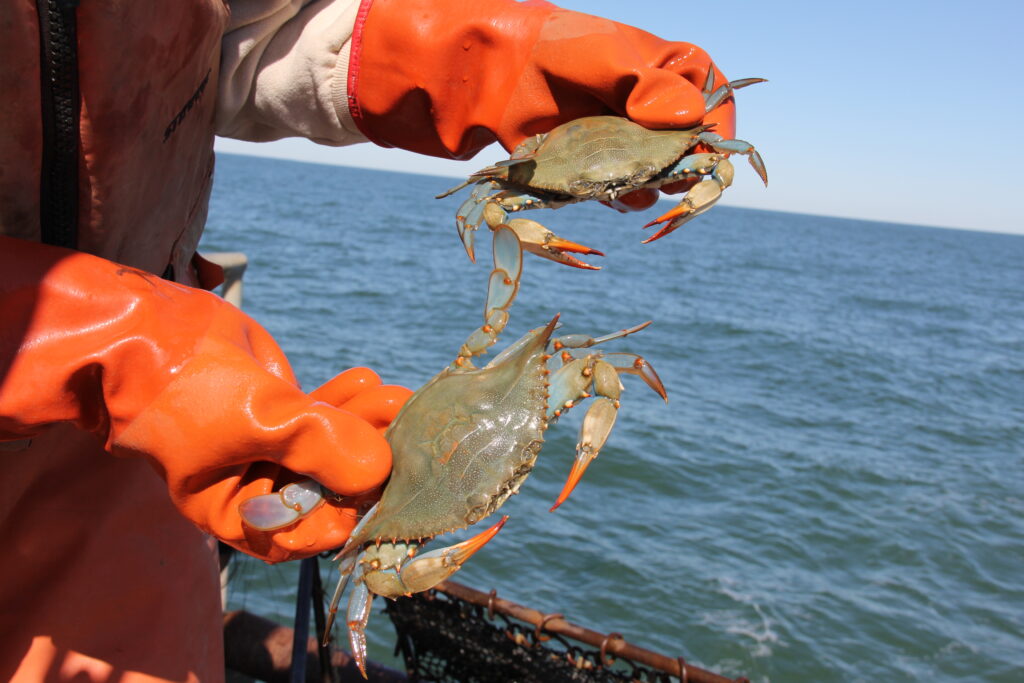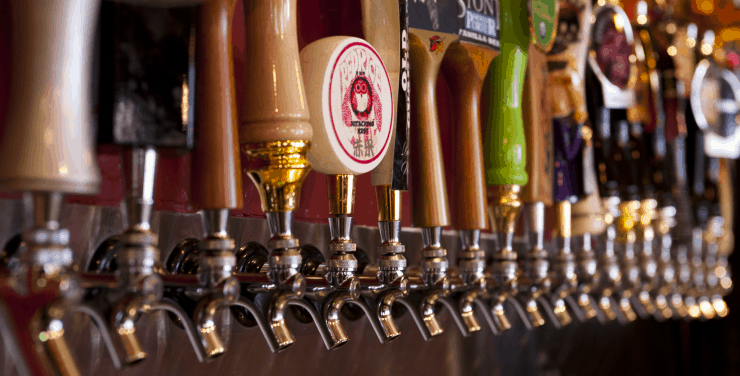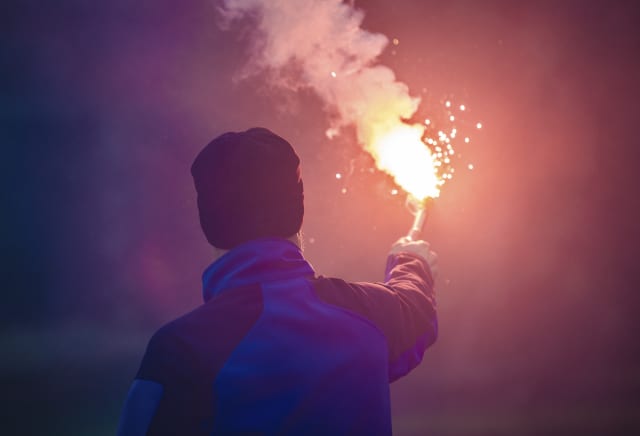Virginia announced it will lift the ban on winter crabbing that’s nearly two decades old, after a vote this week by the Virginia Marine Resources Commission (VMRC). Virginia watermen striving to make a living catching summer crabs and winter oysters may welcome the additional harvest opportunity.
However, Maryland fishery managers and some environmental groups are not so enthusiastic. After VMRC voted 5-4 to repeal the longtime prohibition on winter dredging for blue crabs, the Maryland Department of Natural Resources (DNR) issued a statement saying it “strongly disagrees with Virginia’s decision.”
Historically, watermen near the mouth of the Chesapeake Bay dragged heavy metal traps behind the boat to harvest dormant crabs from their winter rest in the bottom of the Bay. In 2007, alarming crab survey numbers prompted Virginia fishery managers to ban the practice beginning in 2008.
The argument for closing the winter dredge season was that adult female crabs would typically account for about 90 percent of the winter harvest, according to VMRC. At that time of year, females migrate to the southern part of the Bay to release their eggs.
Average crab numbers have risen since 2008, with this winter’s Baywide estimated blue crab abundance at 317 million crabs. VMRC points out that adult female crabs surpassed the average level for the second year in a row.
In response to this year’s crab survey results released in May, the agency wrote, “The female blue crab population has been responding well to the management changes implemented following the 2008 Blue Crab Fishery Disaster declaration and the absence of overfishing among female crabs in 2024 marks a continued positive trend.”
In a media release Wednesday, VMRC said that lifting the ban allows Virginia to “assess the viability of reintroducing a controlled and regulated year-round crab fishery, potentially including potting, dredging, and other gear types.”
As soon as VMRC narrowly voted to lift the ban, Maryland was quick to denounce the decision. The state believes a winter dredge survey would keep the population of majority female blue crabs from being able to spawn the next generation of crabs.
In a statement, Maryland Department of Natural Resources Secretary Josh Kurtz said, “The Virginia Commission’s unilateral decision will impact the species at a time when Marylanders are regularly sitting down to pick crabs with their friends and families. A decision of this magnitude should have only been made with the support of scientists, in close consultation with Maryland officials, and in response to a significant increase in the blue crab population.”
Calling the timing of the decision poor, Kurtz pointed out that an in-depth, two year blue crab stock assessment is just getting underway to get a clearer picture of the various impacts on crab abundance.
Kurtz said, “It’s a bad day if you care about blue crabs. We are reviewing our options to ensure the sustainability of the blue crab fishery.”
The Chesapeake Bay Foundation (CBF) says the winter dredge season will hurt the crab population and cause a ripple effect.
In a statement, CBF Virginia Executive Director Chris Moore said, “Adding this new harvest while an assessment of the blue crab population is ongoing is ill-advised. Virginia needs to maintain a precautionary approach for the sake of all crabbers and the health of the Chesapeake Bay, not take an avoidable risk with a vital species.”
But one day after these strong reactions, VMRC emphasized that any new winter crabbing would be done under a controlled and regulated framework. The agency projects that, if reopened, no more than 20 crabbers are expected to have interest in obtaining a dredge license, saying that would mean a minimal increase in overall crab harvest.
VMRC says its staff will continue to collaborate with the Crab Management Advisory Committee and the Virginia Institute of Marine Science (VIMS) to “assess the feasibility and impacts of a year-round crab fishery” and will meet in September to make plans for a possible winter season. By way of reassurance, the agency says it aims to ensure that any future fishery operates sustainably within the broader context of crab management efforts.



